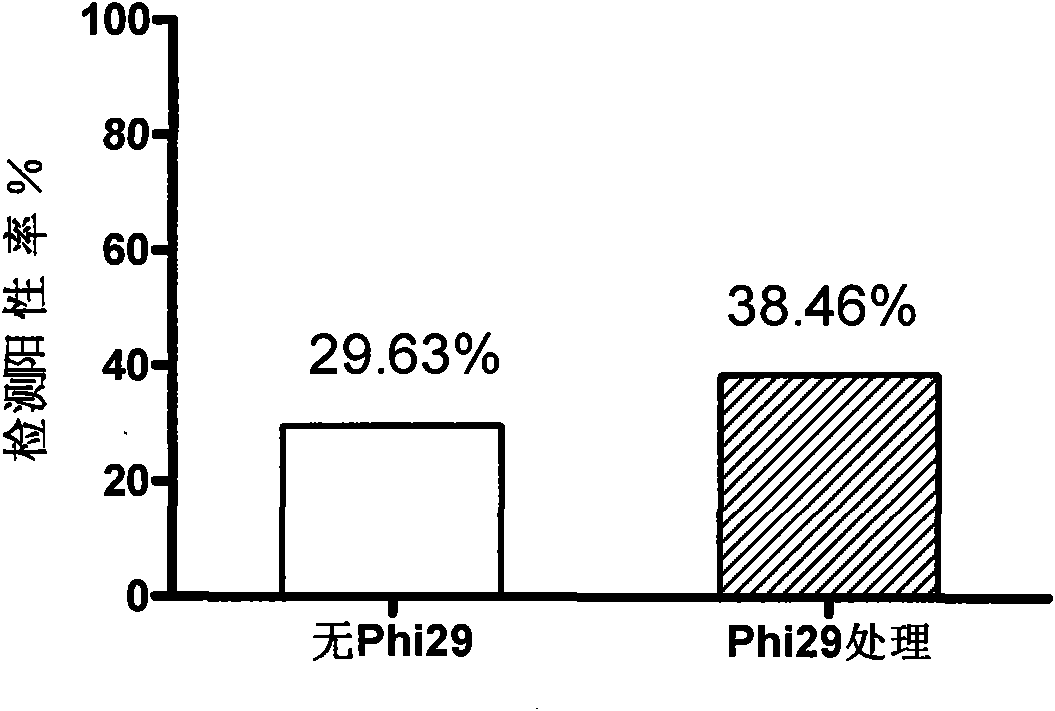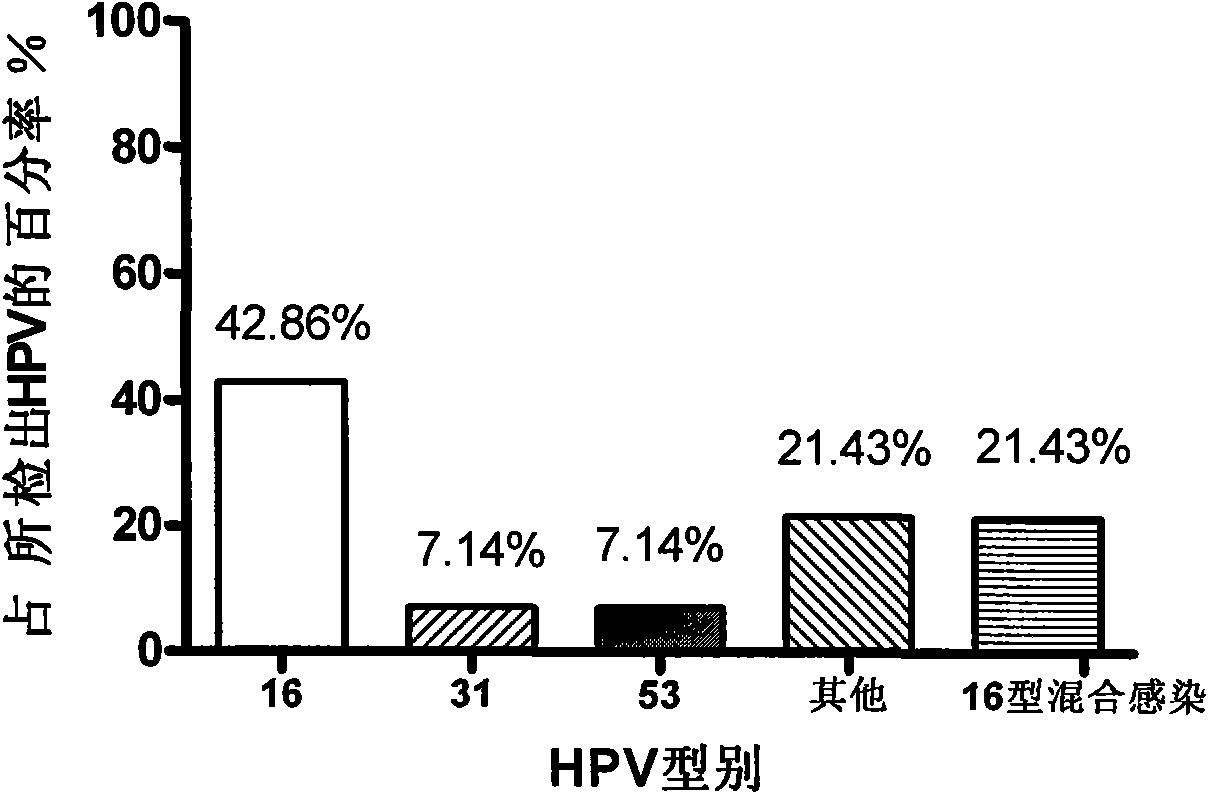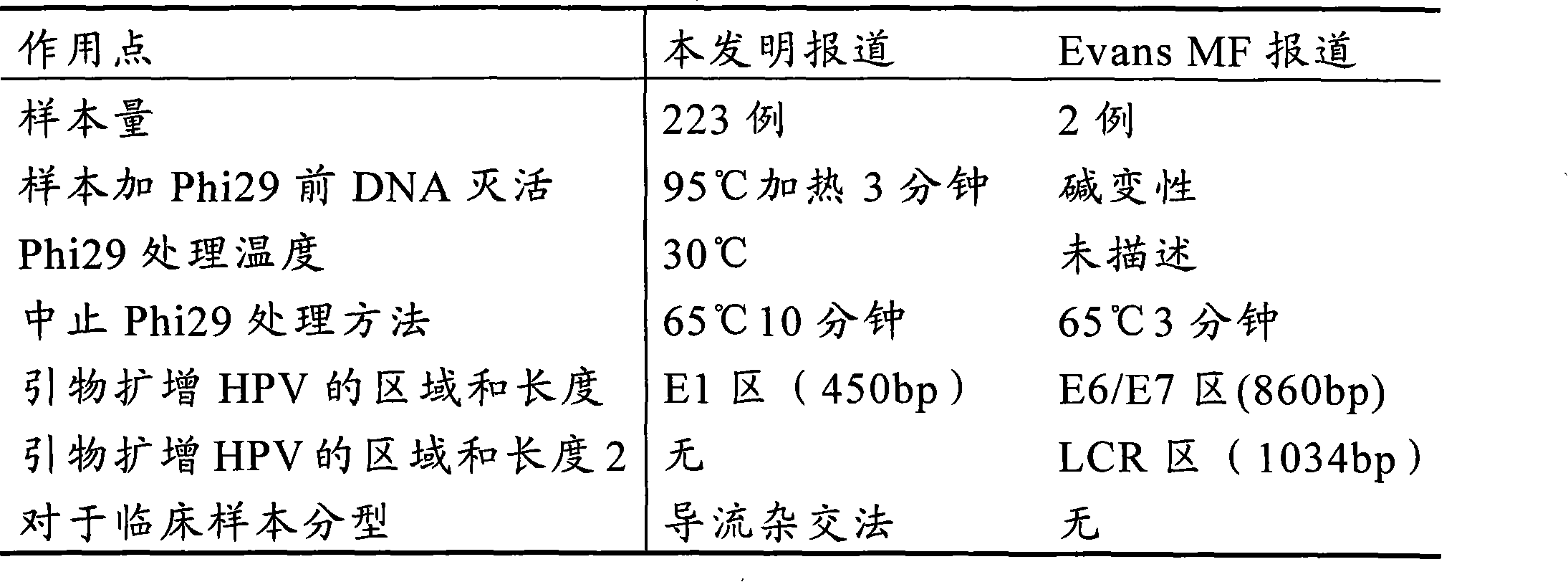Method for detecting HPV and application of Phi29DNA polymerase in detecting HPV
A polymerase and virus detection technology, which is applied in biochemical equipment and methods, microbial measurement/inspection, etc., can solve the problem of low HPV detection rate, achieve stable amplification output, strong clinical use value, and simple operation Effect
- Summary
- Abstract
- Description
- Claims
- Application Information
AI Technical Summary
Problems solved by technology
Method used
Image
Examples
Embodiment 1
[0037] Materials and Methods
[0038] Materials: 223 samples of gynecological outpatients whose test results were negative by the Cape HPV diversion hybridization instrument. The samples came from the following hospitals in Shanghai: Shanghai Sixth People's Hospital, Shanghai Ninth People's Hospital, Shanghai Putuo District Women and Children Health Center, Huangpu District Maternal and Child Health Hospital, Guobin Medical Center, and Armed Police Hospital are all outpatients; Phi29 enzyme was purchased from NEB Company (M0269, NewEngland Biolabs) in the United Kingdom; Kaipu diversion hybridization instrument was purchased from China Kaipu Biotechnology Co., Ltd. .
[0039] Extraction of DNA from patient samples: using the kit provided by Hybribio (Hybribio, HPV Genotyping Detection Kit).
[0040] Whole-genome Multiple Displacement Amplification (MDA): Operate according to NEB instructions, and the specific steps are as follows: Take 1 μL of reaction buffer, 2.5 μL of rando...
PUM
 Login to View More
Login to View More Abstract
Description
Claims
Application Information
 Login to View More
Login to View More - R&D
- Intellectual Property
- Life Sciences
- Materials
- Tech Scout
- Unparalleled Data Quality
- Higher Quality Content
- 60% Fewer Hallucinations
Browse by: Latest US Patents, China's latest patents, Technical Efficacy Thesaurus, Application Domain, Technology Topic, Popular Technical Reports.
© 2025 PatSnap. All rights reserved.Legal|Privacy policy|Modern Slavery Act Transparency Statement|Sitemap|About US| Contact US: help@patsnap.com



